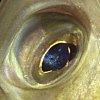 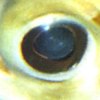 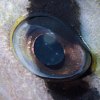 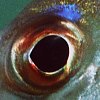 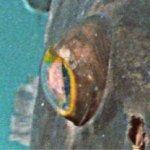 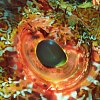
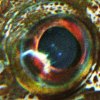 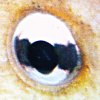 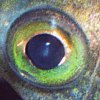 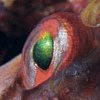 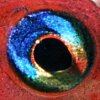 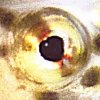
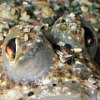 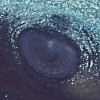 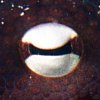 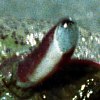 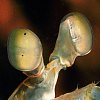 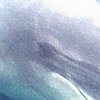 |
Fish eyesrecognise fish by their eyeswww.seafriends.org.nz/photolib/eyes.htm |
Do you know which marine creatures belong to these
eyes? Click on any to find out.
Then use the GO
BACK button on your browser to come back here.
     
     
      |
.
| The eye is the most wonderful part of our bodies. Interestingly, it
was already fully developed hundreds of millions of years ago, reason why
most creatures have very good eyesight, and their eyes are similar to ours.
The eyes of the more primitive creatures, such as reptiles and birds, are
very noticeably different from ours. Even those of cats, which are mammals
just like us, differ because they have different pupils.
Considering that all reptiles, amphibians, birds and mammals originally stemmed from fishes in the ocean, it is surprising that fish eyes are so well developed, and that they are so similar to ours. But fish have larger eyes, in order to see better in the darkness of the sea. The fishes found in depths of 100-200m have indeed very large eyes, which you can admire in the fish shop. But even at the depths visited by divers, the light has diminished to only a fraction of its intensity above water. The eyes of the sea creatures living there, thus had to adapt to low light conditions, which means that their eyes are comparatively larger than those of land animals. If we try to see with our eyes submerged, we'll notice that everything looks blurred. That is because the lens of our eye is a water lens, which works only because there is air outside our eyes. In the water it does not work very well. So fish eyes have a different substance as their lens, and it is highly curved. Because the outside of our eyes needs to be moistened frequently, we have eye lids. These also allow us to close our eyes. But fish lack such a mechanism. It is therefore surprising that they are able to keep their eyes so clean, and free from attack by the likes of sea lice. Some fish have indeed very beautiful eyes. |
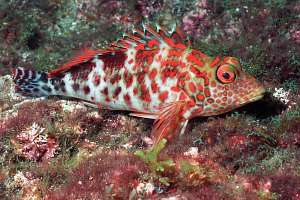 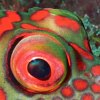 f031221:
The splendid hawkfish lives in turbulent water where it holds itself steady
with the fingers on its breast fins. Its white-red-green colours make it
look splendid indeed. However, in natural light, the colour red becomes
brown. f031221:
The splendid hawkfish lives in turbulent water where it holds itself steady
with the fingers on its breast fins. Its white-red-green colours make it
look splendid indeed. However, in natural light, the colour red becomes
brown. |
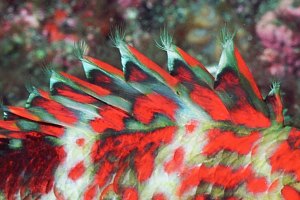 |